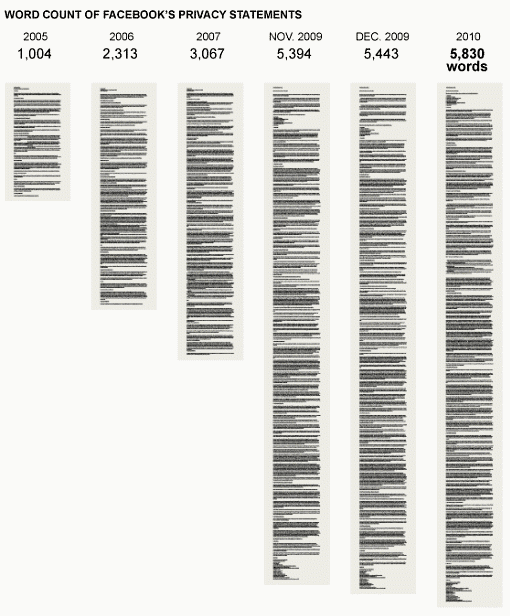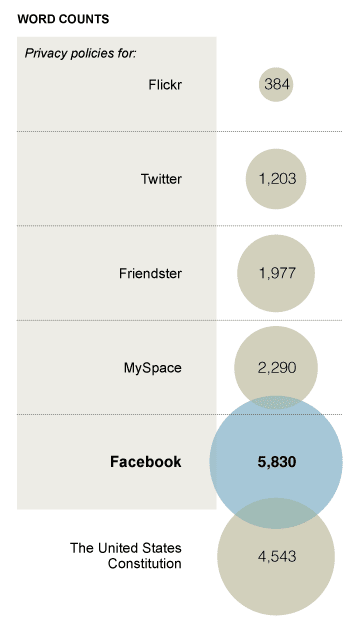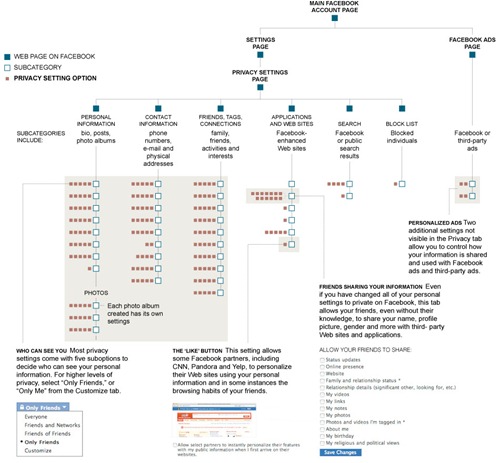At the turn of the new year (from December 2009, actually), Facebook brought dramatic changes to their privacy policy requiring users to opt out if they wish to keep information private. This means that most of that information is public by default and now some personal data is even shared with third-party Web sites.
Facebook’s privacy policy has kept on growing with each new edit and addendum, and now has reached a point where it has surpassed the United States Constitution on total number of words. According to this NYTimes article, Facebook’s Privacy Policy is 5,830 words long while the United States Constitution, without any of its amendments, is a concise 4,543 words.


There are some more numbers:
To opt out of full disclosure of various information, a user is required to click through more than 50 privacy buttons, which then require choosing among a total of more than 170 options.
The FAQ section relating to privacy on Facebook’s “Help Center” alone adds up to more than 45,000 words.
Even if a user changes all the settings on the privacy section of the site, certain pieces of information are still shared across the site unless a user takes further action. Furthermore some information no longer remain private because Facebook has also added a feature, called community pages, which automatically links personal data, like hometown or university, to topic pages for that town or university.
[Click to Enlarge]
Facebook’s privacy is a complete mess.
Related: A timeline of Facebook’s changing Privacy Policy


Comments
Post a Comment